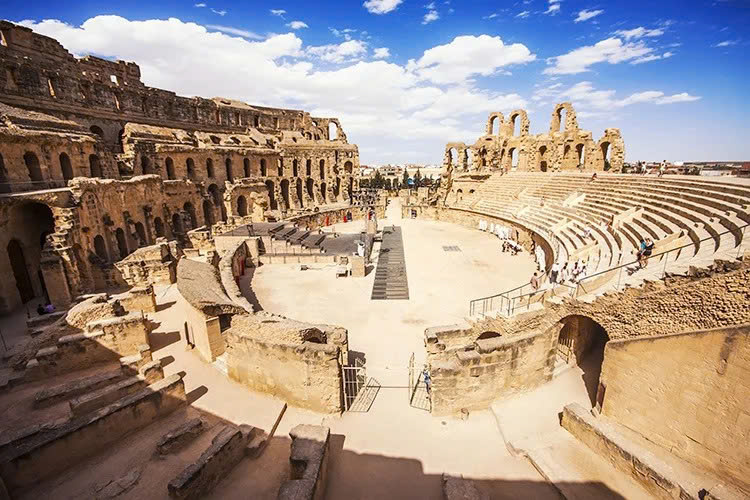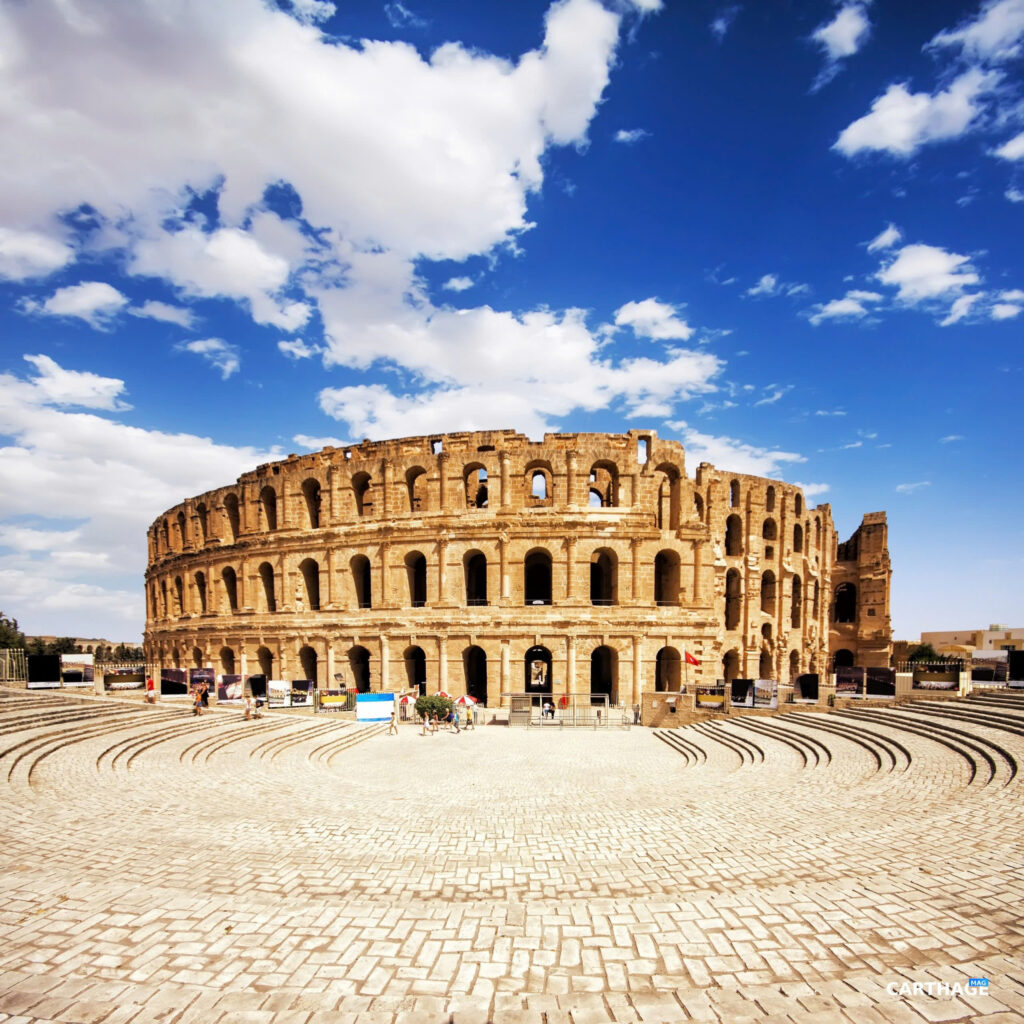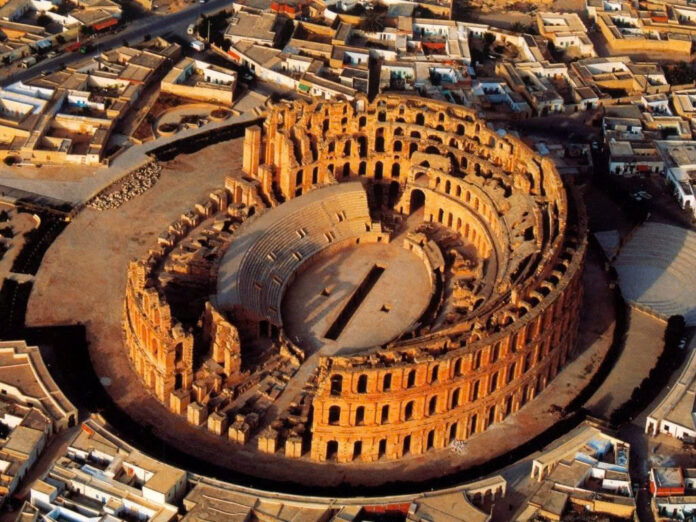In the heart of Tunisia’s rolling countryside, where olive groves stretch toward the Mediterranean horizon, stands a monument that defies time itself. The El Jem Amphitheatre rises from the small village landscape like a stone giant, its weathered arches whispering tales of imperial glory and ancient spectacle.
A Monument Born from Imperial Ambition
The Vision of Ancient Thysdrus
Nearly eighteen centuries ago, in what was then the thriving Roman settlement of Thysdrus, an extraordinary vision took shape. Between 230 and 238 AD, master builders and architects embarked on an ambitious project that would rival the greatest structures of the empire. Under the watchful eye of African Consul Gordian—who would later challenge Rome itself for imperial power—this colossal amphitheatre began its rise from the North African earth.

Unlike many Roman constructions, this architectural wonder was built without traditional foundations, its massive stone blocks fitted together in a feat of engineering that continues to astound modern visitors. The builders crafted something truly unique: while inspired by Rome’s famous Colosseum, the El Jem Amphitheatre emerged as an original masterpiece, adapted to its African setting and local materials.
Engineering Marvel of the Ancient World

The numbers alone tell a story of breathtaking ambition. Measuring 149 meters by 124 meters, this stone colossus could accommodate 40,000 roaring spectators—a population that would have dwarfed most ancient cities. For six decades, construction teams worked tirelessly, hauling precious Tunisian marble and Italian stone through a remarkable 35-kilometer tunnel that connected the construction site directly to the Mediterranean coast.
From Glory to Fortress: A Building’s Many Lives
The Arena’s Golden Age
During its heyday, the amphitheatre pulsed with the energy of imperial entertainment. The arena floor, now peaceful and grass-covered, once witnessed the clash of gladiators’ swords and the thunderous footsteps of exotic beasts brought from across Africa. Beneath this stage, in the shadowy underground chambers discovered in 1904, gladiators prepared for battle while wild animals paced in their cages, all connected by a network of tunnels and lifting mechanisms that brought drama to the surface.
Transformation Through the Ages

As empires rose and fell, the amphitheatre adapted and endured. When Vandal forces swept across North Africa in 430 AD, the massive structure transformed into a fortress, its thick walls providing protection for local inhabitants. Later, during the Arab conquest of 647 AD, it again served as a stronghold, proving that its builders had created something far more lasting than mere entertainment.
The African Colosseum: A Living Legacy
Architectural Treasure of Two Worlds
Today, the El Jem Amphitheatre stands as the only arena worldwide—apart from Rome’s Colosseum—to preserve its complete three-story facade. Visitors can climb the ancient stone steps to the upper galleries, where panoramic views reveal the same landscapes that once welcomed Roman merchants and North African traders to the prosperous city of Thysdrus.
Gateway to Ancient Mysteries
Modern explorers can venture into the underground passages where history comes alive. These subterranean corridors, where gladiators once waited for their moment of truth, now offer visitors a tangible connection to the past. The sophisticated infrastructure that supported tiered seating remains largely intact, providing insight into Roman engineering prowess adapted to African conditions.
Video
A UNESCO World Heritage Wonder

Recognized by UNESCO for its outstanding universal value, the El Jem Amphitheatre serves as more than just a tourist destination. It represents a bridge between continents and cultures, showcasing how Roman civilization flourished in North African soil. The monument attracts history enthusiasts, architecture lovers, and curious travelers from around the globe, all drawn by its nickname as the “African Colosseum.”
Planning Your Journey to El Jem
What Awaits Modern Visitors
The amphitheatre offers a multi-layered experience that appeals to diverse interests. Architecture enthusiasts marvel at the sophisticated stonework and engineering solutions. History buffs trace the footsteps of gladiators and emperors. Photographers capture the play of Mediterranean light through ancient arches. And families create lasting memories exploring one of humanity’s most impressive ancient structures.
A Monument That Continues to Inspire

For those planning a journey to Tunisia, the El Jem Amphitheatre represents an unmissable opportunity to witness where Roman ambition met African ingenuity. It stands as proof that some human achievements transcend their original purpose, becoming timeless symbols of cultural heritage that continue to inspire wonder across the centuries.
In the quiet moments before crowds arrive, when morning light first touches the ancient stones, visitors can almost hear the echoes of 40,000 voices rising in excitement, reminding us that some places hold the power to connect us directly with the grand theater of human history.

